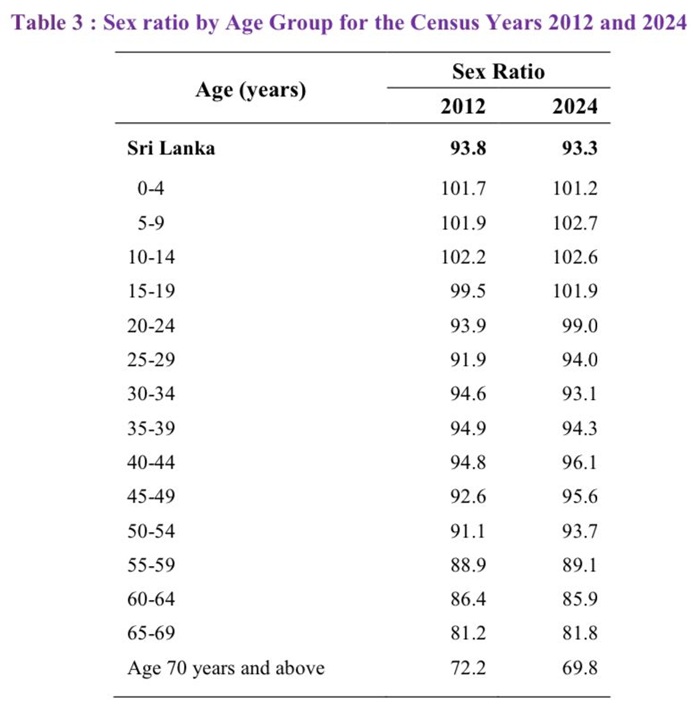
Sri Lanka’s 2024 Population and Housing Census reveals that females continue to make up the majority of the country’s population, a trend first observed in 2001.
Compared to the 2012 Census, the male population percentage has declined in both the Urban and Rural sectors, while a slight increase is recorded in the Estate sector. The Urban sector now reports the highest proportion of females.
Historically, males accounted for a larger share of the population, with the 1981 Census recording 51 per cent males. However, by 2001, women represented 50.2 per cent of the population in the 18 districts where enumeration was completed.
The national sex ratio—defined as the number of males per 100 females—has further declined from 93.8 in 2012 to 93.3 in 2024, indicating a continued female surplus. Age-specific data show that the ratio exceeds 100 among those aged 0–19 years, suggesting more males in younger groups. However, the ratio steadily decreases with age, reaching its lowest level of 69.8 among those aged 70 and above.
This decline in the sex ratio with age highlights a key demographic pattern: although more males are born, females tend to live longer. Higher male mortality rates and lower life expectancy contribute to a growing female majority in older age groups, a trend with implications for healthcare, social welfare, and population planning. (Newswire)

